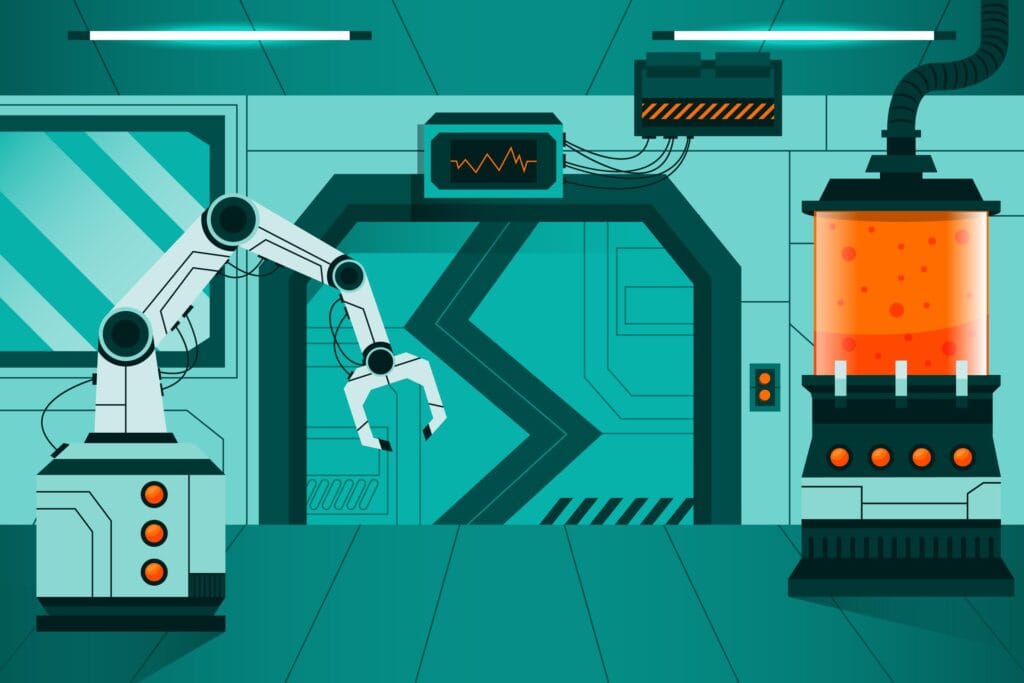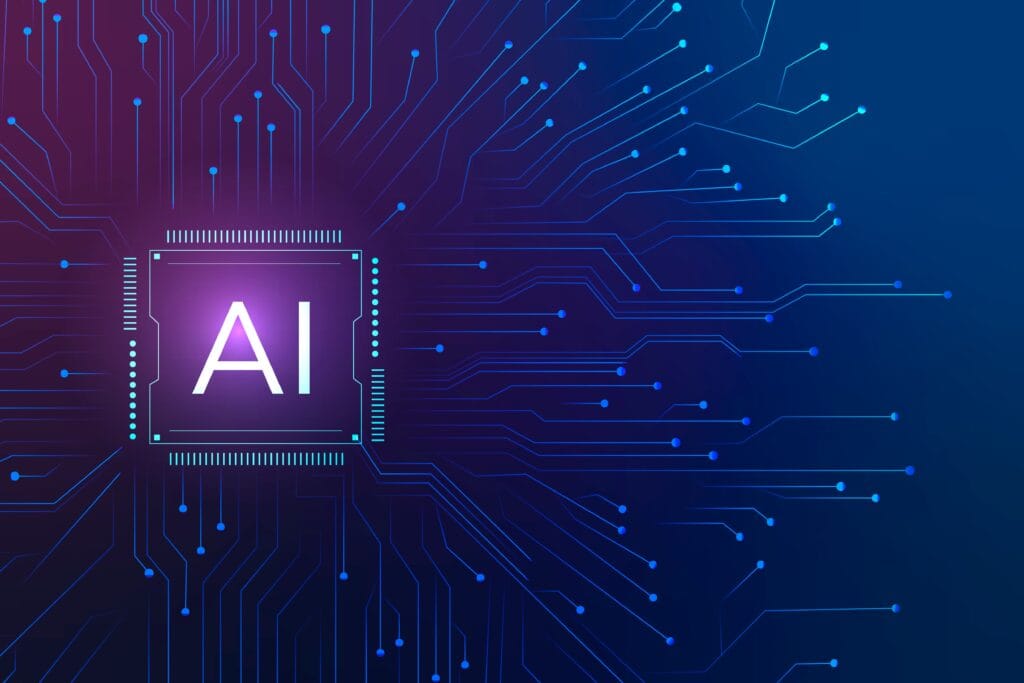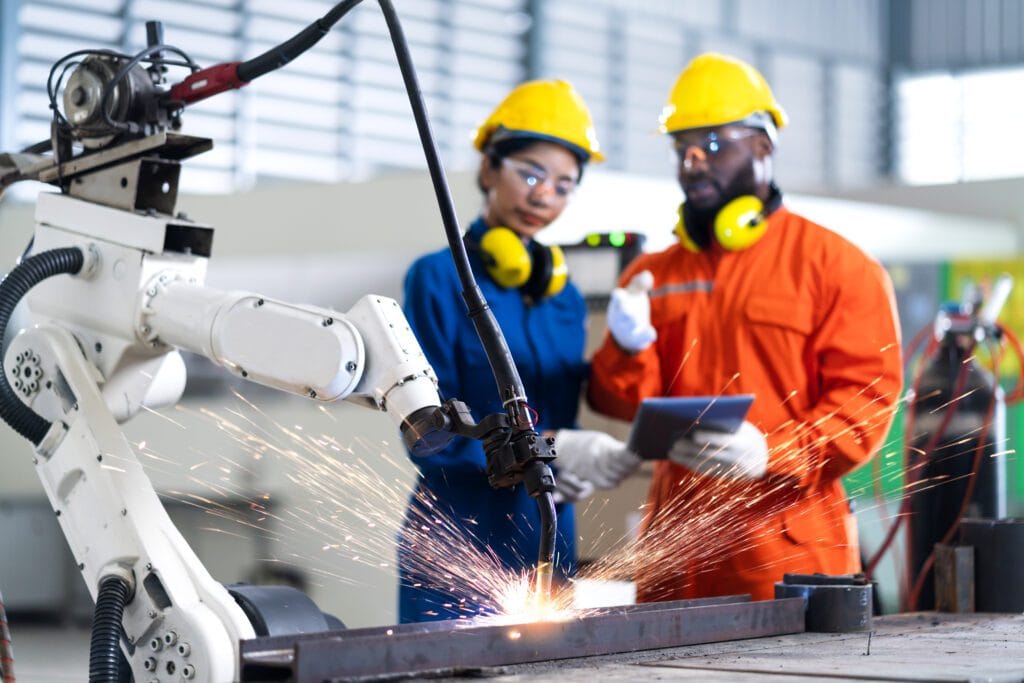Introduction: Robotics as a Gateway to Future Technology

- Introduction: Robotics as a Gateway to Future Technology
- 1. Evolution of Robotics: From Simple Machines to Intelligent Systems
- 1. Evolution of Robotics: From Simple Machines to Intelligent Systems
- 2. AI in Robotics: Making Machines Intelligent
- 3. IoT-Connected Robotics: Real-Time Communication
- 4. Advanced DIY Robotics Projects for Learners
- 5. Educational Robotics: Shaping Future Innovators
- 6. Robotics in Industry 4.0: Driving Business Transformation
- 7. Cloud Robotics and Data Analytics
- 8. Ethical and Social Considerations in Robotics
- 9. DIY Robotics for Personal Growth
- 10. Future Trends in Robotics (2025+)
- 11. Continuous Learning Path for Robotics Enthusiasts
- Conclusion: Robotics as a Foundation for the Future
In our first robotics blog, we explored the fundamentals of robotics, from simple machines to basic automation, and introduced DIY robotics for beginners. But robotics today is far more than repetitive movements or assembly line arms. In 2025, robotics is a convergence of artificial intelligence, IoT connectivity, coding, and automation, giving rise to intelligent, adaptive, and collaborative systems.
This blog dives deeper, exploring advanced concepts, practical applications, DIY projects, educational robotics, and future trends. Whether you are a student, hobbyist, or professional, this guide is designed to create a continuous learning journey, connecting the dots with AI, Python, IoT, Web Development, and other related technologies.
By the end of this blog, you’ll understand how to integrate robotics into real-world applications, learn hands-on projects, and see the bigger picture of robotics in 2025.
1. Evolution of Robotics: From Simple Machines to Intelligent Systems
Robotics has evolved significantly over the past few decades:
- Early Robotics: Focused on mechanical arms and repetitive industrial tasks. These robots lacked adaptability and intelligence.
- Modern Robotics: Today’s robots are AI-powered, connected via IoT, and capable of learning. They can perform complex tasks, adapt to new situations, and collaborate with humans safely.
- Collaborative Robots (Cobots): Designed to work alongside humans, enhancing productivity without replacing human workers.
Example: A cobot in a manufacturing unit can pick, sort, and assemble parts while adjusting its speed and path based on real-time human movement. Continuous Learning Tip: Understanding this evolution helps you appreciate how robotics intersects with AI, IoT, and coding, which we explore in subsequent sections.
2. AI in Robotics: Making Machines Intelligent
Artificial Intelligence transforms robots from machines into decision-making systems.
Key AI Capabilities:
- Machine Learning (ML): Robots learn from previous actions and data to improve performance.
- Computer Vision: Robots can identify objects, people, and environments.
- Natural Language Processing (NLP): Enables robots to understand and respond to human instructions.
- Reinforcement Learning: Robots adapt by trial and error, optimizing their behavior over time.
Practical Examples:
- Warehouse Robots: AI enables real-time path optimization, obstacle avoidance, and inventory management.
- Healthcare Robots: AI-assisted surgeries use vision and sensor data for precise operations.
Autonomous Vehicles: Self-driving cars analyze traffic, pedestrians, and road conditions to make decisions.
3. IoT-Connected Robotics: Real-Time Communication
IoT sensors are the eyes and ears of modern robots. They collect, share, and analyze data, enabling connected, intelligent systems.
Applications of IoT Robotics:
- Smart Factories: Robots exchange sensor data to predict maintenance needs and prevent downtime.
- Healthcare: Wearable devices share patient data with robotic assistants for continuous monitoring.
- Agriculture: Drones and robotic tractors optimize watering, fertilization, and crop monitoring.
DIY Example: A Raspberry Pi-based robot can use temperature, humidity, and motion sensors to navigate your home and alert you remotely.
4. Advanced DIY Robotics Projects for Learners
For enthusiasts, DIY robotics projects bridge theory and practical skills. Here’s a deeper dive:
1. Voice-Controlled Robot
- Components: Raspberry Pi, microphone, speaker, Python code.
- Function: Accepts voice commands to navigate or perform tasks.
- Learning Outcome: Integrates NLP, Python, and sensor control.
2. AI-Powered Surveillance Robot
- Components: Camera module, Python, OpenCV.
- Function: Detects motion, tracks objects, and alerts via cloud notifications.
- Learning Outcome: Combines AI, IoT, and cloud computing.
3. Smart Home Robotics System
- Components: IoT-enabled sensors, Raspberry Pi/Arduino, Python scripts.
- Function: Control appliances, lights, or doors via automated rules.
- Learning Outcome: Blends IoT and automation principles.
4. Robotic Arm with Machine Learning
- Components: Servo motors, Arduino, Python ML model.
- Function: Learns to pick and sort objects based on color, shape, or size.
- Learning Outcome: Hands-on ML integration and robotics control.
Also you can Read more about Python by clicking here….
5. Educational Robotics: Shaping Future Innovators
Educational robotics is more than play; it cultivates problem-solving, critical thinking, and STEM skills.
- Kits: Arduino, Raspberry Pi, LEGO Mindstorms, VEX Robotics.
- Curriculum Integration: Coding lessons, sensor projects, robotics challenges.
- Example Project: A Raspberry Pi robot measuring air quality and reporting data online.
Why it Matters: Students develop practical skills and a mindset for innovation, preparing them for careers in AI, automation, and engineering.
6. Robotics in Industry 4.0: Driving Business Transformation
Robotics is central to Industry 4.0, enabling intelligent, connected, and automated production systems.
Applications:
- Manufacturing: Cobots collaborate with humans to improve efficiency.
- Logistics: Automated sorting, packing, and delivery systems reduce errors and costs.
- Healthcare: Robotic-assisted surgeries and patient monitoring improve precision and safety.
Trends:
- Predictive maintenance using AI and IoT data.
- Robotics-as-a-Service (RaaS) for small businesses.
- Cloud-enabled robotics ecosystems for real-time optimization.
7. Cloud Robotics and Data Analytics
Cloud robotics allows robots to share data and intelligence across networks, enabling collective learning and predictive decision-making.
Benefits:
- Reduces hardware limitations by offloading processing to cloud servers.
- Enables data-driven insights for optimization.
- Allows robots to collaborate globally in real-time.
Example: Delivery drones sharing traffic data and optimizing routes collaboratively.
8. Ethical and Social Considerations in Robotics
As robotics advances, ethical concerns arise:
- Job displacement versus human augmentation.
- Privacy concerns in IoT-connected robots.
- Decision-making responsibility in healthcare or defense.
Best Practices: Build safe, transparent, and ethical robots that enhance human work instead of replacing it.
9. DIY Robotics for Personal Growth
Robotics projects are not just educational; they foster:
- Problem-solving skills: Tackle real-world challenges with code and hardware.
- Creativity: Design solutions that are innovative and functional.
- Career readiness: Build a portfolio for AI, IoT, and robotics roles.
Project Ideas:
- Line-following or obstacle-avoiding bots.
- Smart IoT-enabled home assistants.
Robotic arms learning object recognition with ML models.
10. Future Trends in Robotics (2025+)
- Self-learning robots: Adapt without human intervention using reinforcement learning.
- Collaborative robots: Safely work alongside humans in factories and labs.
- Hyperconnected systems: Integrating cloud, AI, IoT, and automation seamlessly.
- Robotics for social good: Healthcare, environmental monitoring, education.
- DIY robotics revolution: Affordable kits and cloud tools empower students and hobbyists worldwide.
11. Continuous Learning Path for Robotics Enthusiasts
- Start Small: Build simple DIY robots with Arduino or Raspberry Pi.
- Integrate AI: Add computer vision, ML, or NLP capabilities.
- Connect with IoT: Enable real-time communication and remote monitoring.
- Explore Industry Applications: Understand robotics in manufacturing, healthcare, and logistics.
- Future Projects: Experiment with cloud robotics, autonomous systems, and collaborative robots.
This continuous learning approach ensures you gradually master robotics while connecting with AI, coding, IoT, and automation concepts.
Conclusion: Robotics as a Foundation for the Future
Robotics today is more than machines; it’s a multi-disciplinary ecosystem powered by AI, IoT, coding, and automation.
By following a continuous learning journey, starting with simple DIY projects and advancing to intelligent, connected systems, learners, hobbyists, and professionals can:
- Build practical skills in technology.
- Create real-world applications that impact daily life and business.
- Contribute to ethical, intelligent, and innovative robotics solutions.
Robotics is not a separate domain—it intersects with AI, Python, IoT, Web Development, and automation, forming the backbone of modern technology in 2025.


